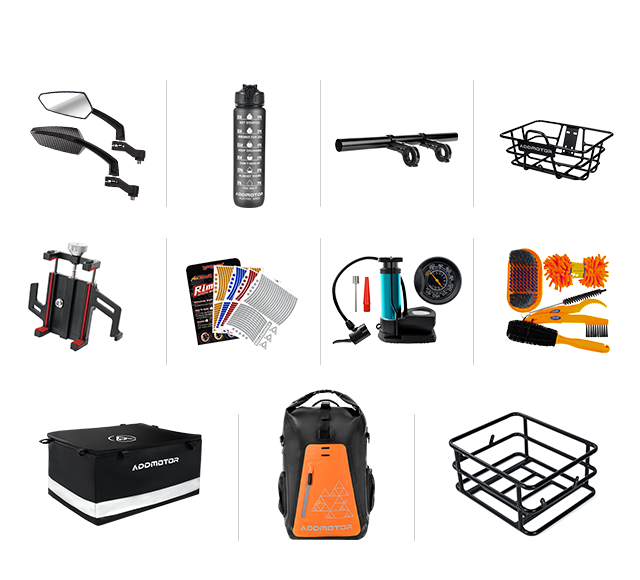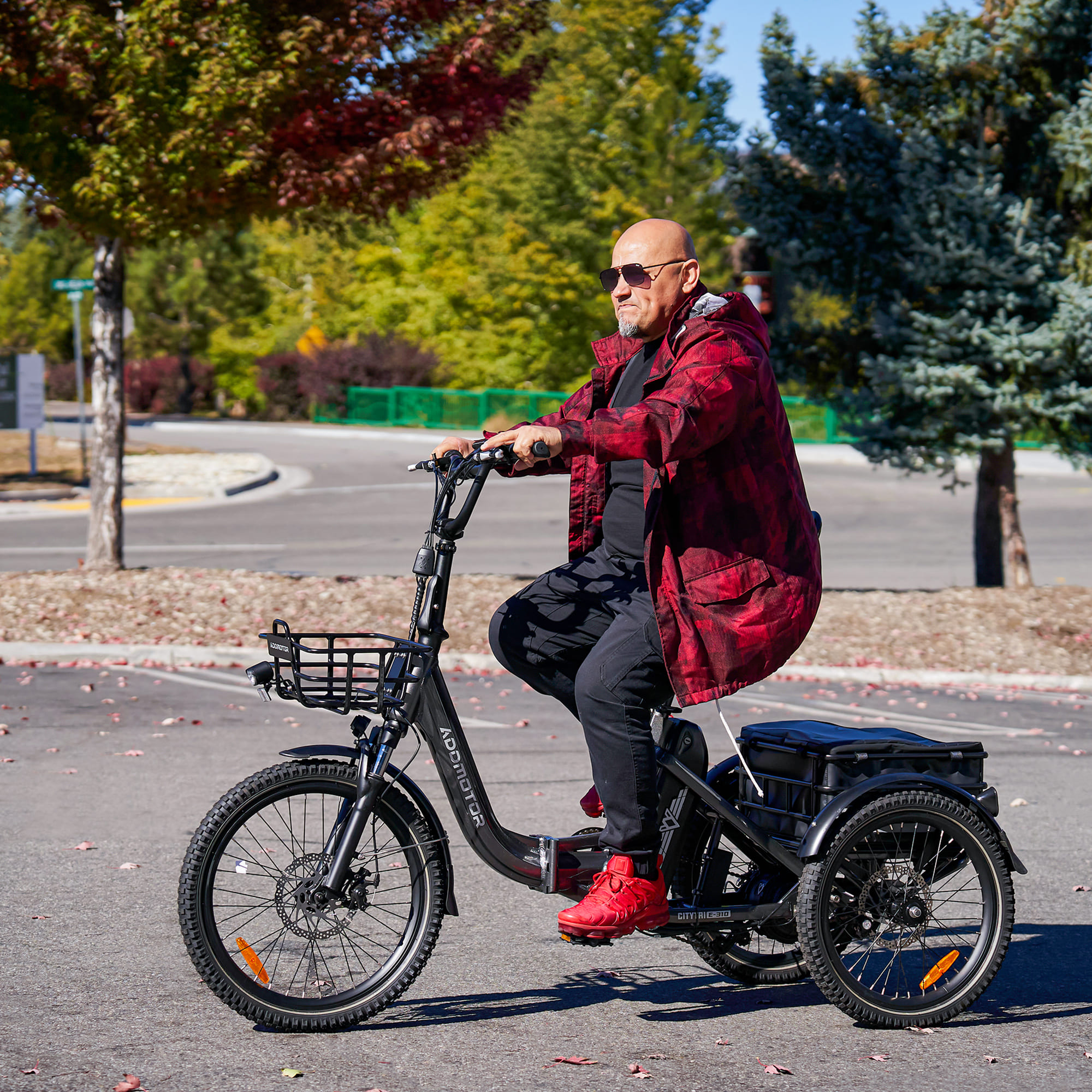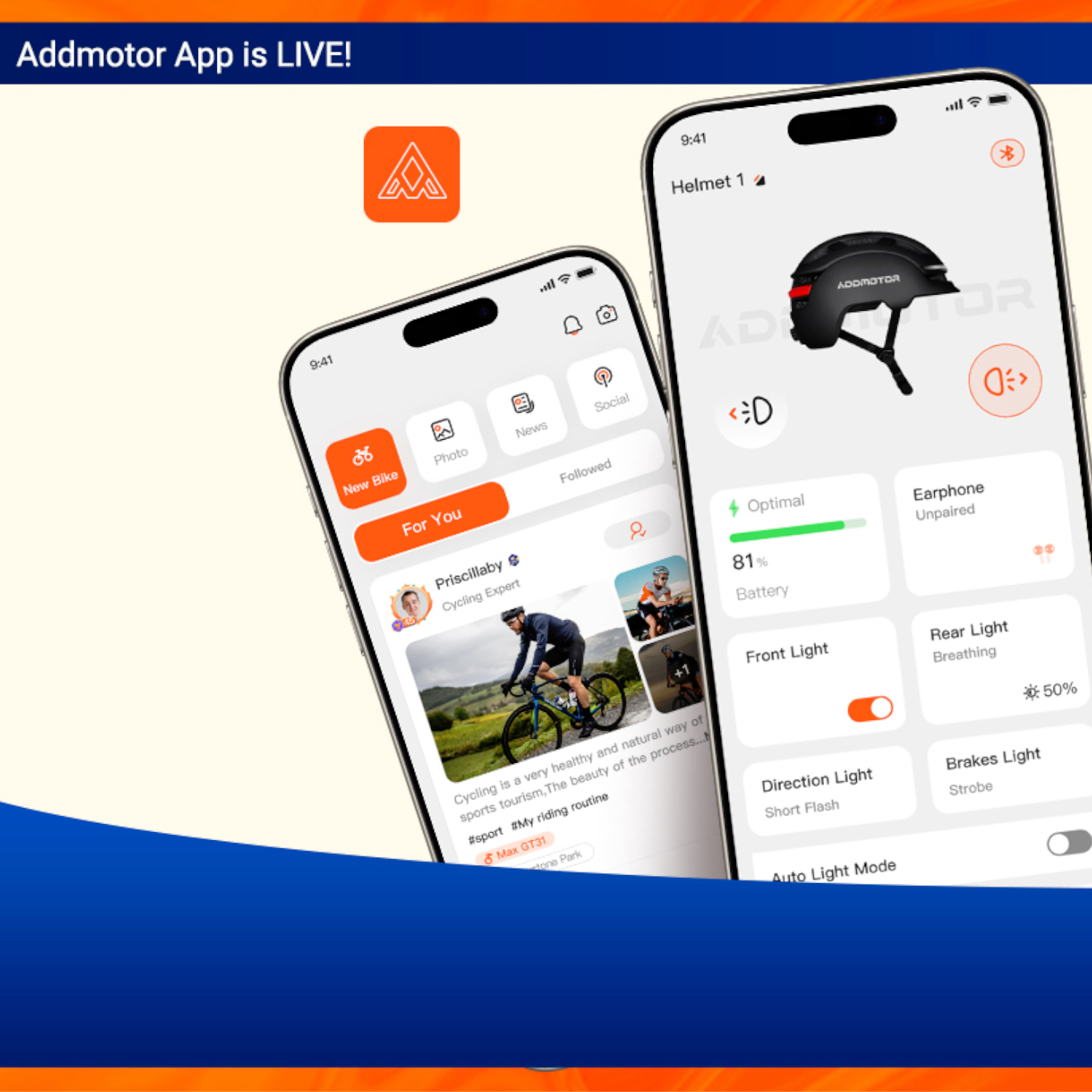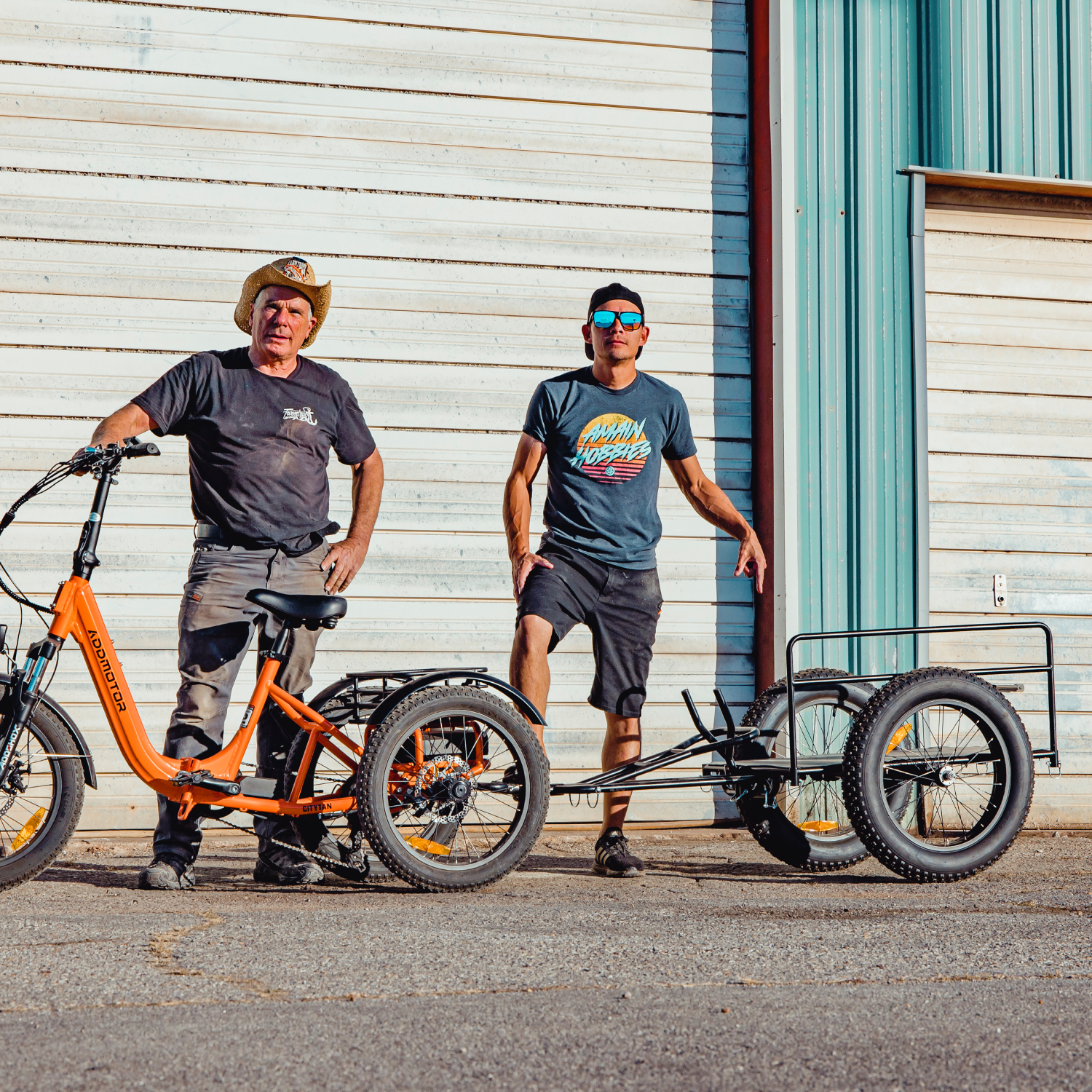What You Need to Know About Electric Trike Suspension
A suspension system on an electric trike improves the riding experience. They also minimize wear and tear and improve maneuverability.
By Addmotor | 13 December 2023 | 0 Comments
_1702979108.jpg)
Suspension on electric trikes can seem like a complicated topic. However, they are a crucial component of any vehicle.
This is mainly because they help improve the riding experience by reducing the vibrations felt by rocky and uneven terrain. They also serve other uses and require extensive maintenance for optimal performance.
In this article, we’ll talk more about suspension systems in electric trikes, how they work, and how to get the best out of this system.
Why Suspension is Important for Electric Trikes
There are several reasons why suspension is a crucial component of electric trikes. At a glance, it has to do with rider comfort, maneuverability, and maintaining the longevity of the bicycle’s frame and other components.Let’s talk more about these in detail.
Improving Comfort
The primary reason why electric trikes, and bicycles in general, place a priority on suspension is to provide a comfortable riding experience.A proper suspension system can help minimize the impact felt when riding through rugged and uneven terrain. Whether off-road, cobblestones, asphalt, or even stairs, a suspension system will absorb most of the vibrations and dissipate them effectively.
As a result, the rider can enjoy a smooth riding experience. They won’t fatigue too easily or suffer from injuries such as joint pain or backaches.
Addmotor electric trikes excel in this regard. They are designed for adults, and seniors as everything from the tricycle frame to the suspension system and the seat is designed to provide the utmost comfort and ergonomics.
So if you’re wondering what’s the best electric trike for seniors? Look no further than the Addmotor GRANDTAN.
Maintaining Stability and Maneuverability
Apart from the obvious: keeping the rider comfortable, the suspension is also responsible for maintaining traction and responsiveness of the electric trike.This is especially important when riding on uneven terrain such as unpaved roads and off-road trails. The suspension system will absorb the vibrations taken in by rocks and other obstacles while providing enough traction to keep the trike easy to control.
Minimizing Wear and Tear on Components
Another overlooked aspect of electric trike suspension is its ability to minimize degradation on the other parts of the trike, mainly the aluminum frame.Similar to how the suspension protects the rider and cushions impacts, the suspension also minimizes unnecessary jolts and stresses applied to the other parts of the bicycle.
The frame, drivetrain, batteries, and other parts of the bicycle are less likely to move around and experience wear and tear. This minimizes the frequency at which you need to carry out repairs and replacements.
What is Suspension in Bike or Trike?
So now you understand why a suspension system is important. However, it’s equally important to understand what consists of a suspension system and how it works to cushion impacts.In most electric trikes, the suspension system sits between the bicycle frame and the wheels. They take in the impacts absorbed by the wheels and try to dampen these forces before they can reach the bicycle frame and the rider.
Several components make up the suspension system. This includes:
Front Fork
The Front fork consists of two tubes that can compress and retract into itself. This helps absorb impacts while still retaining steering control. These tubes are what connect the front wheel to the frame or head tube.There are different types of suspension forks depending on the trike specs and use cases. Inside the fork, you can find the spring and dampers.
Rear Shocks
This includes a single telescopic tube or piston that is typically encased inside a metal spring. The rear shocks typically sit between the seat stays and the downtube and help improve traction and comfort overall.Springs
The springs are used to absorb the brunt of the impacts and dissipate them back into the suspension system.When the wheels push up when riding over uneven terrain, the springs contract to draw in the force of the impact. Then it pushes back into the wheels instead of letting these forces make their way into the frame or rider.
It contracts and retracts quickly to absorb and counteract these forces. This can cause the spring to oscillate, causing the rider to lose control.
That’s where dampers come into play.
Dampers
As the name suggests, dampers help “dampen” the impacts absorbed by the spring. It prevents the spring from pinging back and forth when it absorbs particularly heavy vibrations and impacts.Simply put, the damper consists of a piston and chambers often filled with a fluid. When the spring is compressed, the piston absorbs the extra forces and pushes into the fluid chamber.
The fluid is then passed through several other smaller chambers that help dissipate the forces much more efficiently.
When the spring retracts, the opposite happens and the fluid is rerouted.
The Different Types of Suspension Systems for Electric Trikes
There are different types of suspension systems utilized in bicycles and trikes. These vary depending on the types of terrain it’s supposed to be used in.Putting the best suspension system in any bicycle or trike isn’t always the best course of action. The suspension system can add to the weight, cost, and ability to gain speed and make turns.
For Addmotor electric trikes, the most common type of suspension setups are either full suspension trikes or front suspension-only.
Rear suspension-only trikes and bikes are hard to find and rigid trikes won’t offer a comfortable and smooth riding experience, especially for heavy riders.
Front Suspension
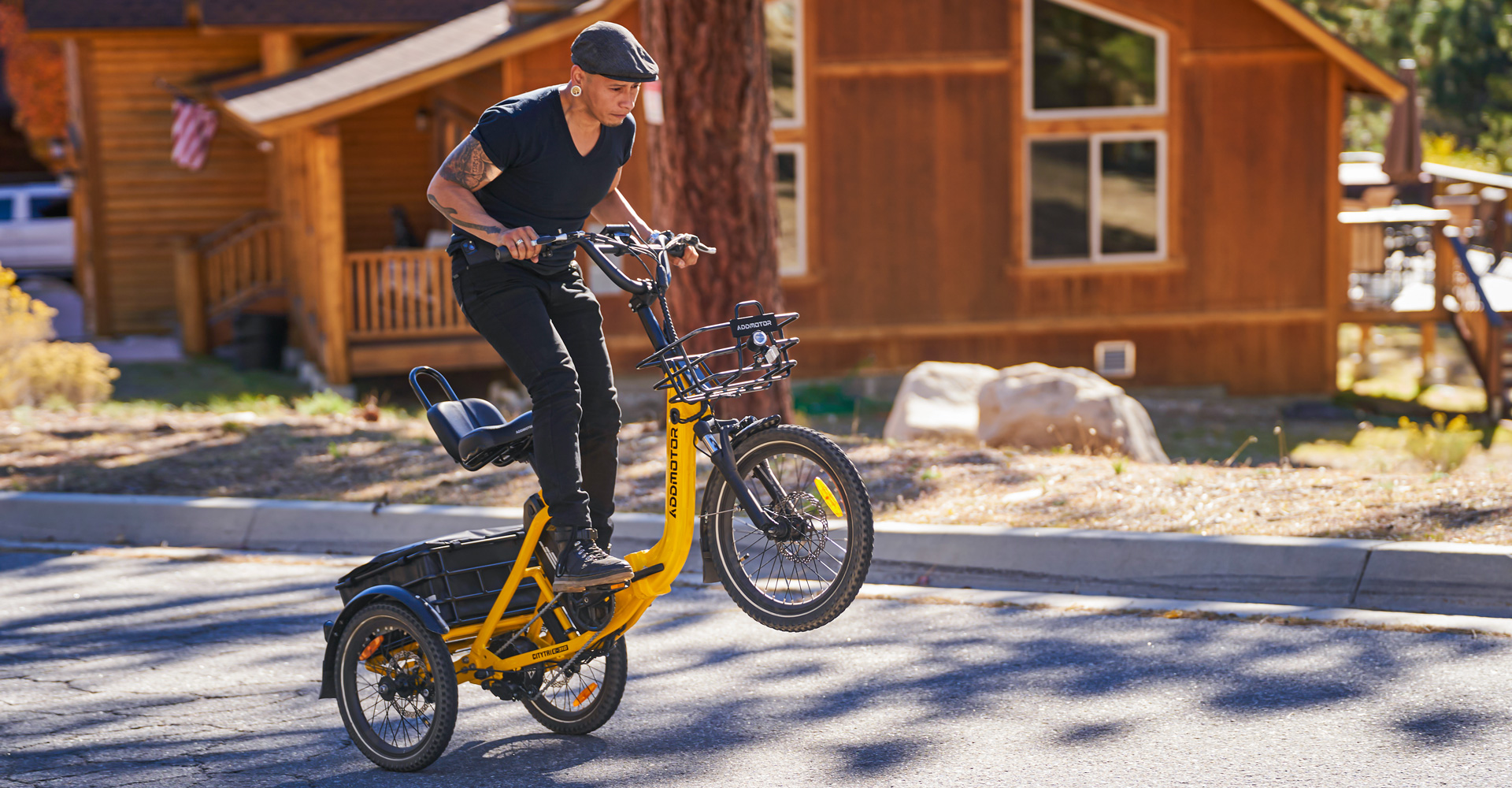
The majority of electric trikes come with front suspension. They utilize different types of suspension forks that allow the rider to remain comfortable and still retain a good amount of steering precision when handling rough terrain.
With Addmotor, we recommend the CITYTRI E-310 as a powerful city cruiser with front suspension only.
It’s got an Addmotor front fork with 80mm of travel (the maximum distance the forks can compress) and a 750W rear-mounted motor.
However, if you’re looking to trade speed and power for comfort, the ARISETAN II M-360 is a viable alternative. This electric trike features an Addshox steel fork and a 750W rear-mounted hub motor.
Full Suspension
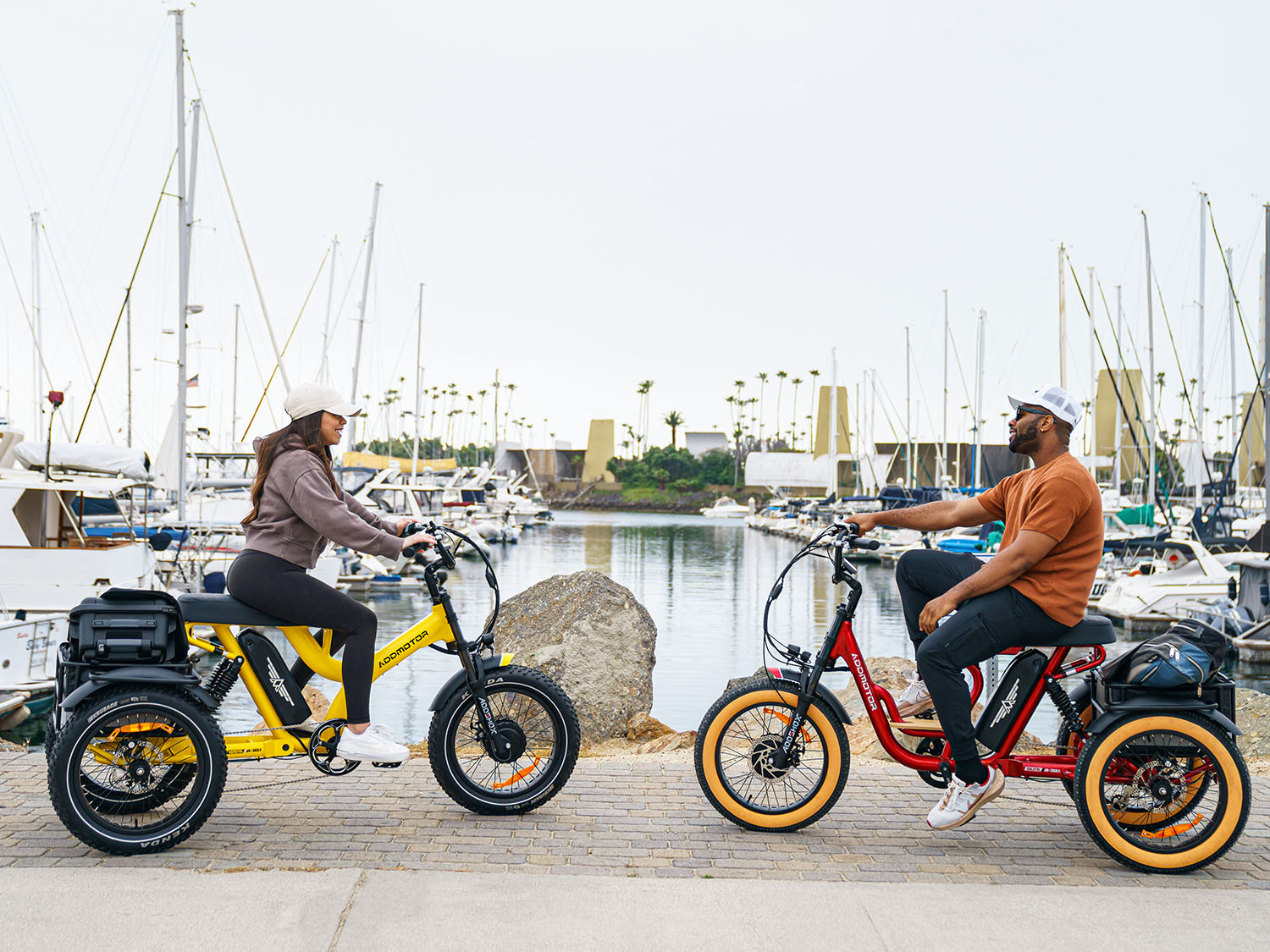
Full-suspension trikes are few and far between. However, they are still out there and provide the maximum amount of comfort for riders and heavy cargo. The only caveat with full suspension trikes is that they tend to be heavier and difficult to climb with. So compared to a front-only suspension or rigid trike, you’ll have to do a lot more work trying to push up a hill.
At Addmotor, the SOLETRI M-366X is our best bet for a full-suspension trike. It’s designed to carry two people with a payload capacity of 350 lbs plus 100 lbs of cargo.
Other than that, the Addmotor Herotan and Soletan moped-style bikes also offer full suspension.
How to Maintain the Suspension System of Electric Trikes
Repairing or replacing a front fork can be expensive, and a rear suspension even more so. As such, you must take care of the front fork regularly and ensure it’s clean, and operating as it should be.A well-maintained front fork and suspension system can keep things going smoothly and extend the lifespan of your electric trike.
So here are some quick tips to keep your electric trike’s suspension system clean as ever:
1. Clean Any Dust or Dirt that’s Accumulated Inside the Boot
After each ride or whenever you’re washing the bike, it’s a good idea to ensure the rubber sheath (also called “Boot”) is clean.Simply wash away any dust and wipe it down so it’s fully dry. Also, make sure to fold it up and check underneath for mud, dust, and debris.
2. Wipe the Stanchions
After cleaning the boot, make sure to pull it up and wipe the stanchions with a clean and dry microfiber cloth. This helps take out stubborn dust particles that might damage the telescopic column.Also, don't forget to clean the seals on the crown and keep them clear of any dust. Dry and dirty seals tend to draw out the lubricants.
In turn, this can result in scratches to the stanchion tubes and they can be expensive to replace.
3. Carry out a Lower Leg Service Regularly
Ideally, it’s recommended to service the lower legs of a fork every 25 riding hours. This includes removing the lower legs, cleaning them out, checking them for any signs of damage, and refilling the lubricant.You can carry out a lower leg service at home. It will only take around 5 minutes once you get the hang of it.
Wrapping Up
Suspension systems improve overall comfort and help prevent premature wear and tear.This system takes in abrupt forces and vibrations from uneven terrain. They then dissipate them and prevent the forces from affecting the frame and the rider.
There can be different suspension systems but mainly there are full suspension trikes and ones with only front suspension. Front-only suspension is the most common and full suspension is usually reserved for two-person electric trikes moped-style ones.
Leave a Reply
Your email address will not be published.Required fields are marked. *
Latest Stories

